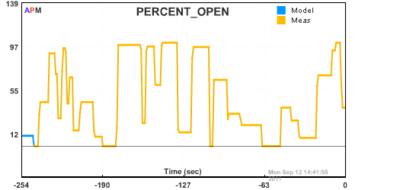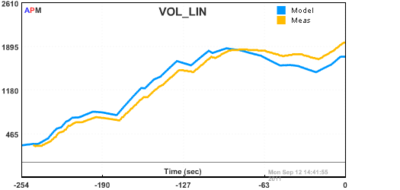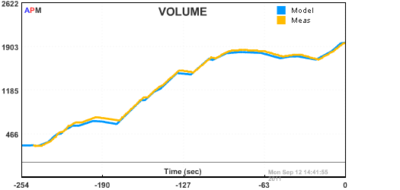Lecture Notes 15
Main.LectureNotes15 History
Show minor edits - Show changes to markup
(:html:)
<div id="disqus_thread"></div>
<script type="text/javascript">
/* * * CONFIGURATION VARIABLES: EDIT BEFORE PASTING INTO YOUR WEBPAGE * * */
var disqus_shortname = 'apmonitor'; // required: replace example with your forum shortname
/* * * DON'T EDIT BELOW THIS LINE * * */
(function() {
var dsq = document.createElement('script'); dsq.type = 'text/javascript'; dsq.async = true;
dsq.src = 'https://' + disqus_shortname + '.disqus.com/embed.js';
(document.getElementsByTagName('head')[0] || document.getElementsByTagName('body')[0]).appendChild(dsq);
})();
</script>
<noscript>Please enable JavaScript to view the <a href="https://disqus.com/?ref_noscript">comments powered by Disqus.</a></noscript>
<a href="https://disqus.com" class="dsq-brlink">comments powered by <span class="logo-disqus">Disqus</span></a>
(:htmlend:)
Linear vs. Nonlinear Models
Linear vs. Nonlinear Models: CSTR Case Study
Linear vs. Nonlinear Models: Gravity Drained Tank Case Study
(:html:) <iframe width="560" height="315" src="//www.youtube.com/embed/RqbnfjOF5tU?rel=0" frameborder="0" allowfullscreen></iframe> (:htmlend:)
(:html:) <iframe width="560" height="315" src="//www.youtube.com/embed/EJxGZKWnuxQ?rel=0" frameborder="0" allowfullscreen></iframe> (:htmlend:)
Homework
- Course reading for next class: 3.1-3.4 (PDC).
- Assignment due by the start of Lecture #16: SP9
Don't forget that the first part of each homework assignment is to write a sentence or two stating the purpose of the problem and what concept is reinforced.
Half of the class derived a FOPDT model of the process using empirical fitting techniques. The other half of the class used a material balance to obtain a model. A comparison of the two models is shown below:
We derived a FOPDT model of the process using empirical fitting techniques. A first principles approach was also used to obtain a model from a material balance. A comparison of the two models is shown below:
(:html:)
<div id="disqus_thread"></div>
<script type="text/javascript">
/* * * CONFIGURATION VARIABLES: EDIT BEFORE PASTING INTO YOUR WEBPAGE * * */
var disqus_shortname = 'apmonitor'; // required: replace example with your forum shortname
/* * * DON'T EDIT BELOW THIS LINE * * */
(function() {
var dsq = document.createElement('script'); dsq.type = 'text/javascript'; dsq.async = true;
dsq.src = 'https://' + disqus_shortname + '.disqus.com/embed.js';
(document.getElementsByTagName('head')[0] || document.getElementsByTagName('body')[0]).appendChild(dsq);
})();
</script>
<noscript>Please enable JavaScript to view the <a href="https://disqus.com/?ref_noscript">comments powered by Disqus.</a></noscript>
<a href="https://disqus.com" class="dsq-brlink">comments powered by <span class="logo-disqus">Disqus</span></a>
(:htmlend:)
Lecture 15 - Linearization
Now that we've derived nonlinear models based on material and energy balances, we need to get them into a form for linear systems analysis. We do this through a process called linearization. In Lecture 15, we review the mathematics of how to linearize a nonlinear function. We have a couple exercises to help practice the linearization process.
Linear vs. Nonlinear Models
We previously ran through an example of a gravity drained tank.

Fig 1: Diagram of the Gravity Drained Tank

Fig 2: Sequence of Valve Movements to Test Models
Half of the class derived a FOPDT model of the process using empirical fitting techniques. The other half of the class used a material balance to obtain a model. A comparison of the two models is shown below:

Fig 3: Linear Model (FOPDT). The linear response is easy to fit to the data but deviates, especially during the periods that are far from the steady state values.

Fig 4: Nonlinear Model Based on a Material Balance. The nonlinear response is valid over a wider range of operation.
Homework
- Course reading for next class: 3.1-3.4 (PDC).
- Assignment due by the start of Lecture #16: SP9
Don't forget that the first part of each homework assignment is to write a sentence or two stating the purpose of the problem and what concept is reinforced.
